City Of Lakes!
Udaipur Rajasthan
Udaipur was founded in 1559, by Maharana Udai Singh II in the fertile circular Girwa Valley to the southwest of Nagda, on the Banas River. The city was established as the new capital of the Mewar kingdom. This area already had a thriving trading town, Ayad, which had served as the capital of Mewar in the 10th through 12th centuries. The Girwa region was thus already well known to Chittaud rulers who moved to it whenever the vulnerable tableland Chittaurgarh was threatened with enemy attacks. Rana Udai Singh II, in the wake of 16th-century emergence of artillery warfare, decided during his exile at Kumbhalgarh to move his capital to a more secure location. Ayad was flood-prone, hence he chose the ridge east of Pichola Lake to start his new capital city, where he came upon a hermit while hunting in the foothills of the Aravalli Range.
Udaipur Tourist Top Attractions
Udaipur, with its lakes, and historic palaces and architecture, is a major destination for tourists, both domestic and foreign nationals visiting the state.
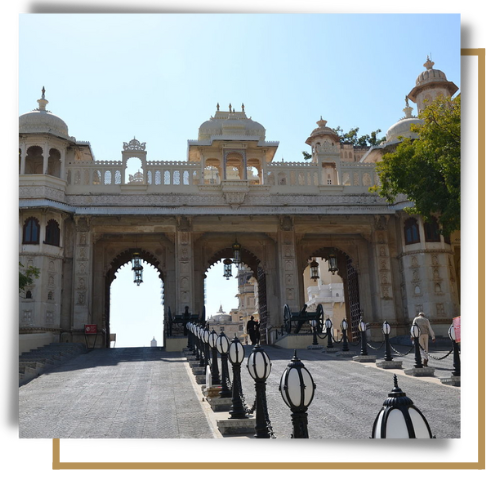
City Palace
City Palace, Udaipur is a palace complex situated in the city of Udaipur in the Indian state of Rajasthan. It was built over a period of nearly 400 years, with contributions from several rulers of the Mewar dynasty. Its construction began in 1553, started by Maharana Udai Singh II of the Sisodia Rajput family as he shifted his capital from the erstwhile Chittor to the newfound city of Udaipur. The palace is located on the east bank of Lake Pichola and has several palaces built within its complex.

Fateh Sagar
Fateh Sagar Lake is situated in the city of Udaipur in the Indian state of Rajasthan. It is an artificial lake named after Maharana Fateh Singh of Udaipur and Mewar, constructed north-west of Udaipur, to the north of Lake Pichola in the 1680s. It is one of the four lakes of the Udaipur city; the other three being: the Lake Pichola (within the Udaipur town), Udai Sagar Lake, 13 kilometres (8.1 mi) to the east of Udaipur, and Dhebar Lake or Jaisamand Lake, 52 km (32 mi) south east of Udaipur.

Monsoon Palace
The Monsoon Palace, also known as the Sajjan Garh Palace, is a hilltop palatial residence in the city of Udaipur, Rajasthan in India, overlooking the Fateh Sagar Lake. It is named Sajjangarh after Maharana Sajjan Singh (1874–1884) of the Mewar Dynasty, whom it was built for in 1884. The palace offers a panoramic view of the city's lakes, palaces and surrounding countryside. It was built chiefly to watch the monsoon clouds; hence, appropriately, it is popularly known as Monsoon Palace.
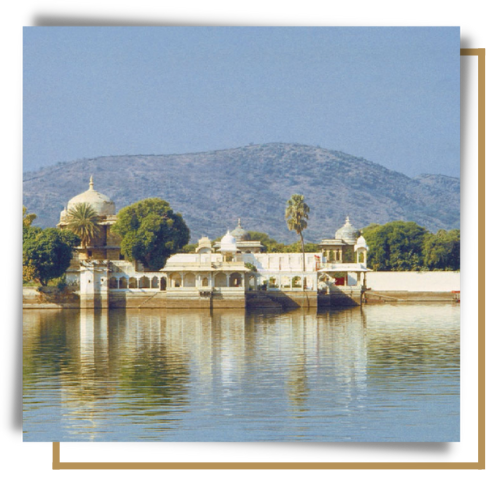
Jag Mandir
Jag Mandir is a palace built on an island in the Lake Pichola. It is also called the "Lake Garden Palace". The palace is located in Udaipur city in the Indian state of Rajasthan. Its construction is credited to three Maharanas of the Sisodia Rajputs of Mewar kingdom. The construction of the palace was started in 1551 by Maharana Amar Singh, continued by Maharana Karan Singh (1620–1628) and finally completed by Maharana Jagat Singh I (1628–1652). It is named as "Jagat Mandir" in honour of the last named Maharana Jagat Singh.
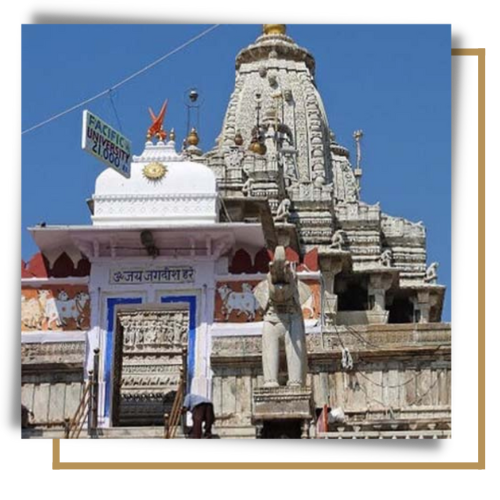
Jagdish Temple
Jagdish Temple is a large Hindu temple in the middle of Udaipur in Rajasthan, just outside the royal palace. It has been in continuous worship since 1651. A big tourist attraction, the temple was originally called the temple of Jagannath Rai but is now called Jagdish-ji. It is a major monument in Udaipur. Shri Jagdish Temple is the most beautiful example of Hindu Iconography, consisting of three stories of hand carved stone, with a steeple nearly 79 feet high temple of Udaipur.
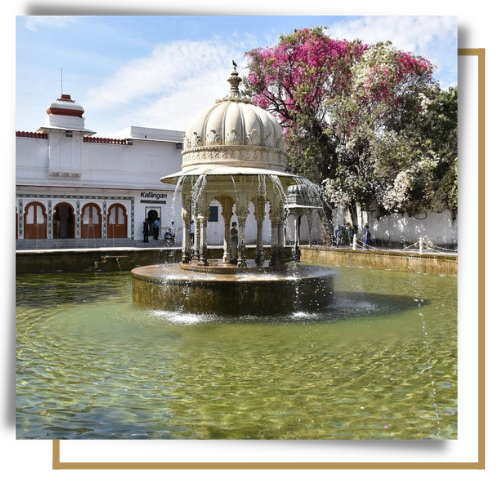
Saheliyon-ki-Bari
Saheliyon-ki-Bari (Courtyard or Garden of the Maidens) is a major garden and a popular tourist space in Udaipur in the Indian state of Rajasthan. It lies in the northern part of the city and has fountains and kiosks, a lotus pool and marble elephants. It was built by Rana Sangram Singh. There is also a small museum here which has a lot of information about Indian history. The garden was designed by the king himself and he presented this garden to his queen.
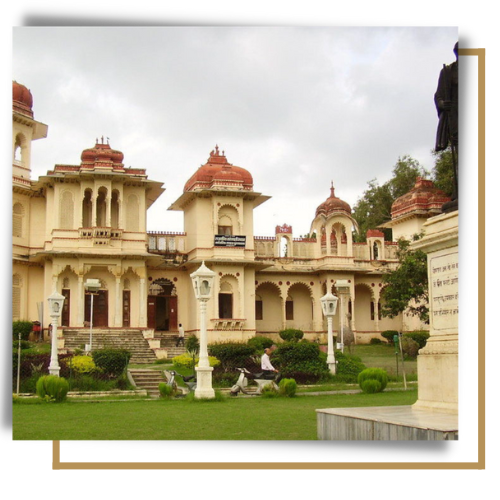
Gulab Bagh
Gulab Bagh (Sajjan Niwas Garden) is the largest garden in Udaipur, Rajasthan, India. It is spread over 100 acres (40 ha) of land. The garden has innumerable varieties of roses. Gulab Bagh gets its name from the abundance of rose flowers it has. Gulab Bagh is an old Sub-City Level Park, having lush green campus and several places of attraction including ponds, library, temples and several government offices. It houses 12 Bovri’s, 5 tubewells, 1 large pond (Kamal Talai – under rejuvenation), 1 zoological park, couple of temples – Arya Samaj, Hanuman, Dargah etc.

